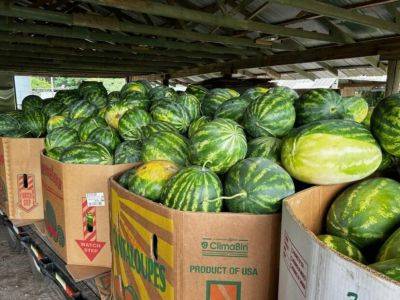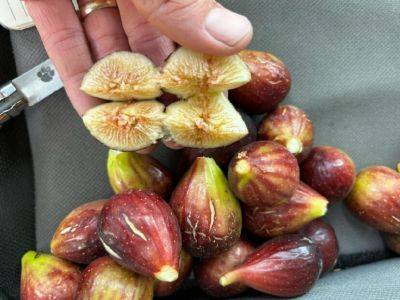Zack Snipes
SC Fruit and Vegetable Field Report – February 7, 2022
24.07.2023 - 12:04 / hgic.clemson.edu
Zack Snipes reports, “Now is the time for Lowcountry strawberry growers to give their plants the first shot of boron. Boron helps with both flower and fruit development. Growers can spray boron or inject it via the drip system. Boron deficiency will show up in your fruit if you skip out on the application. Now is the time to get it out because plants will be pushing blooms soon, and they need the boron available to make nice, pretty flowers and fruit. A boron application takes only a few minutes and literally a few dollars but can keep you from throwing away thousands of misshapen or “bullnose” berries. NOTE: Boron is a great herbicide if overapplied, so make sure you put out the right amount by using the information from the picture below. We only need to put out a tiny amount, but that tiny amount makes a big difference.”
Justin Ballew reports, “This weather in the midlands this past week has been a roller coaster. It’s been warm, cool, sunny, and now rainy. I saw the first daffodil bloom in my yard late this past week, so spring is on its way. Our strawberries are looking pretty good right now, though with the rain we’ve gotten recently, keep an eye out for Phytophthora issues. I’ve gotten several questions about when to start fertigating and protecting blooms. Most experienced growers in our area start fertigating between mid-March and the first of April. I think this is a good reference point, but the weather should help us decide when to start. The forecast seems to be warming sightly, so starting later next week probably will be fine. As far as protecting blooms goes, count back 30 days from the date you’d like to start harvesting. For most growers, let your market be your guide. However, if your picking labor
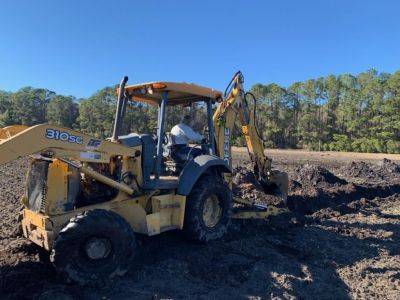
South Carolina Fruit and Vegetable Field Report February 1, 2021
Rob Last reports, “Strawberry crops are developing well; however, we are seeing gray mold phomopsis blight in some crops. Sanitation can really help prevent botrytis from spreading as we move forward when allied to fungicide applications. Keep scouting for spider mites as there are active populations in some crops. Now is a great time of year to think about the maintenance of equipment for bed formation, cultivation for spring crops, and most important product application.”
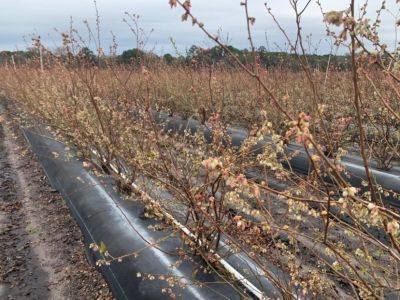
SC. Fruit and Vegetable Field Report February 22, 2021
Zack Snipes reports, “Another rainy, wet, and cold week last week. Some sunshine and warmer temperatures are coming this week. All of our fruit crops have received their chill hours and are just waiting to burst out for spring. I expect to really see fruit crops take off this week. Make sure that you have a fertility plan for the spring crop. Don’t let your crop be without fertility at the critical moments. For more information on fruit fertility, visit https://smallfruits.org/ipm-production-guides/. For smaller farms, Clemson’s Home Garden and Information Center is a wonderful resource as well.”
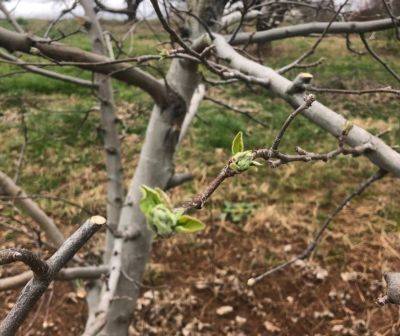
SC Fruit and Vegetable Field Report- March 14, 2022
Dr. Matt Cutulle reports, “I saw my first nutsedge plants this year pop up in the plastic mulch of a fellow researcher’s trial last week in Charleston. Soil temperatures in plastic mulch systems are going to be higher, which may lead to earlier sprouting of yellow nutsedge tubers. New tubers begin forming four to six weeks after a new shoot emerges. Individual nutsedge plants may eventually form patches 10 feet or more in diameter, thus it is important to practice field sanitation once an infestation is recognized.”

SC Fruit and Vegetable Field Update – February 28, 2022
Tom Bilbo, Extension Vegetable & Strawberry Entomologist, reports, “As temperatures warm up in some areas, make sure to scout for spider mites in strawberries. Spider mite feeding on plants early in the spring before plants start fruiting can result in significant yield reductions later. Plants can tolerate much more spider mite feeding once harvesting begins, but protection at earlier stages is critical. It is also much easier to get good management when you suppress mite populations early in their population growth before their numbers start taking off. It is recommended to treat pre-fruiting strawberry plants at a threshold of 5 mites per leaflet (one-third of a leaf). Scout for mites by sampling at least 10 leaflets per acre, collected randomly throughout the area and taking an average of the mite numbers. At this time, it is best to use a miticide that is effective against all life stages (eggs, larvae, and adults). Achieving good mite management at these early stages can keep you in the clear for the remainder of the season.”
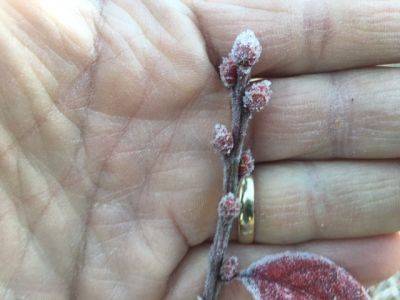
SC Fruit and Vegetable Field Report February 14, 2022
Rob Last reports, “Strawberries in the area look good, with some new leaf development emerging from the crown. Boron applications are being applied, either as a foliar application or through the drip system. Remember, we are looking to apply 1/8 lb. of boron per acre. Over application of boron can be phytotoxic and detrimental to the plants. Plans are also being made to begin fertigation applications later this month to aim for the first pick in early April. The initial target is to apply 5.25 lbs. N per acre. After the first application, a tissue test should be taken to refine fertility recommendations further. Please also remember we have the drip fertigation calculator to make the calculations more straightforward. Brassica transplants are going in the ground this week and are looking good. The pruning of peaches and perennial fruit is pretty much complete, and we await the arrival of spring.”
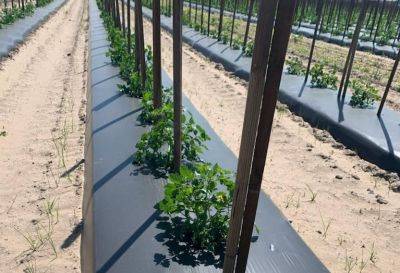
SC Fruit and Vegetable Field Report – April 18, 2022
Zack Snipes reports, “It has been a very windy spring. The winds are drying out our soils and beating up plants. I have looked at some tomatoes, and the ones that aren’t tied are wind-whipped, and the ones that are tied have callus tissue forming where the string is touching them. We have some beautiful lettuce and greens coming in right now, along with spring onions. I have also seen some squash coming in on farms that grew squash in high tunnels. Strawberry plants are still small and have very few blooms for this time of year. We are harvesting highbush blueberries in high volumes right now. I think we escaped more cold damage than previously expected.”
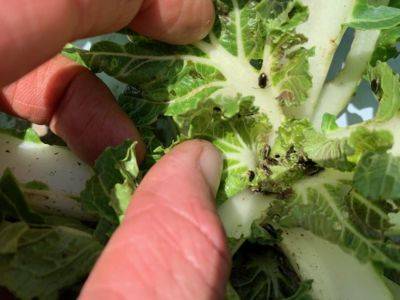
SC Fruit and Vegetable Field Report – May 31, 2022
Zack Snipes reports, “It seems like everything is coming in from the fields right now. We got some rain but could really use some more. I am seeing lots of aphids on a variety of crops (melons, cukes, eggplant). I am also seeing ladybird beetles and parasitized aphids in these fields, which means our predators are out there working for us. Bacterial wilt and Southern blight are starting to appear on tomatoes as well. Knowing the difference and preparing for next season’s crop is critical. It is getting hot and is still windy, so growers might consider adding one or more irrigation cycles to their fields. Remember that in our sandy soils, any irrigation event over an hour is just wasting water. More frequent 30-45 minute cycles are more efficient.”
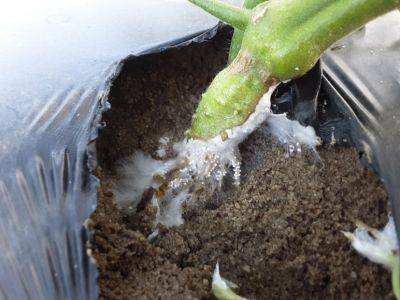
SC Fruit and Vegetable Field Report – June 6, 2022
Rob Last reports, “Insect and disease activity is increasing in the area, across a broad range of crops. In cucurbits, we are seeing powdery mildew and gummy stem blight in watermelon. Remember to keep spray intervals tight. Loopers are also being found in the area, and applications to manage rind worms will be beneficial as we rapidly approach harvest. Fusarium wilt of watermelons is showing up in many fields. At this stage, there is no effective treatment; however, soil temperatures are likely to reduce the incidence of new infections. Tomatoes and peppers are developing well with Southern blight and bacterial wilt in evidence. Spider mites are very active right now. Blackberries are just coming to harvest with good flavor and quality. Remember to scout your crops regularly to ensure timely applications can be made.”
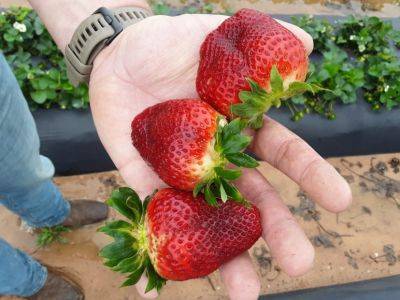
SC Fruit and Vegetable Field Report March 28, 2022
Rob Last reports, “The first of this season’s strawberries are coming to market with good quality. Growers still need to be very mindful of spider mites. Populations are around in the area but are variable. As we get into harvest season, gray mold management will be critical, so sanitation and appropriate fungicide applications will be needed. Otherwise, preparations for watermelon planting and some early cantaloupes have been sown. Damage assessments on later variety peaches will continue.”
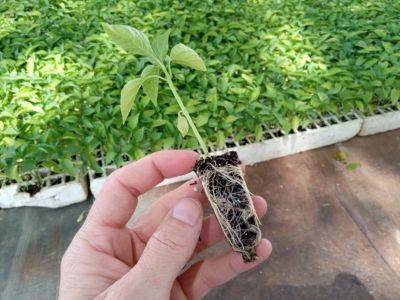
SC Fruit and Vegetable Field Report – August 8, 2022
Zack Snipes reports, “For the most part, it has been hot and dry in the Lowcountry. Things are relatively quiet. I have seen and heard reports of high whitefly numbers in various crops (melons, tomato, and blackberry). We had severe disease outbreaks a few years ago due to a few whitefly-vectored viruses. The two prominent viruses I have seen vectored by whitefly are Tomato Yellow Leaf Curl Virus and Cucurbit Leaf Crumple Virus: See article from 2019 outbreak. If growers have not already planted their fall melons and tomatoes, it would be a good idea to investigate varieties that have resistance to tomato and melon whitefly vectored viruses. I have also seen very high numbers of melonworms as of late.
